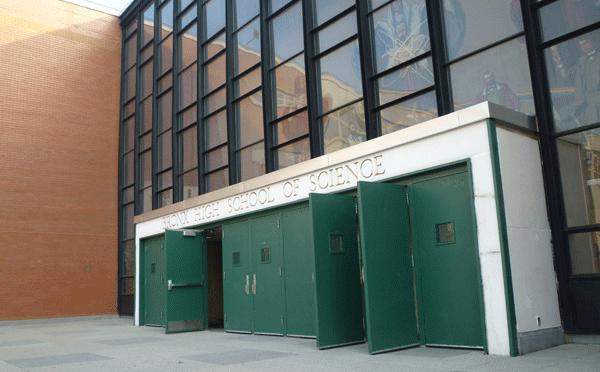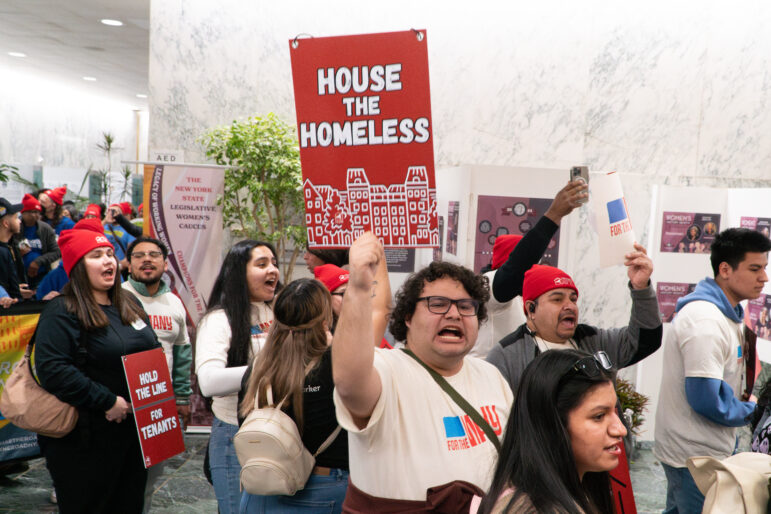
Photo by: Jarrett Murphy
The annual Sci-Hi exam, which governs entrance into Bronx Science (above) and two other elite high schools, is a focal point in the academic life of many immigrant students.
In six months Moontasin Rahman, a seventh-grader at I.S. 230, will take a test required for admission to one of New York City’s elite public high schools. It’s offered to the city’s eighth- and ninth-graders once a year in October. In addition to studying seven hours a week on her own for the test, she also attends a four-hour class once a week at a test-prep school in Jackson Heights, her Queens neighborhood.
Moontasin’s parents have taught her to believe that graduating from one of the city’s elite high schools will determine her fate as an adult. “If you get into one of these schools, you’re set for college, you’re set for life,” Moontasin says. She’s used to declining friends’ invitations to hang out, preferring instead her books and practice exams. “Forget your social life and just study for the test!” Moontasin’s parents say to her.
The Specialized High School Admissions Test, given free of charge by the New York City Department of Education, is the key to getting into the city’s top three public high schools—Stuyvesant High School, Bronx High School of Science, Brooklyn Technical High School—and five other selective high schools.
So common is the exam for Bangladeshi adolescents that it’s become a rite of passage. And parents’ desire to see their children score well on the exam has helped an industry to sprout in the city’s Bangladeshi enclaves. Moontasin is among the many Bangladeshi children who are present or former students enrolled in test prep classes run by fellow Bangladeshis.
The challenging test, known as the “Sci-Hi” exam for short, consists of a math and verbal sections. More than 27,000 kids took the test last fall. Only about one in five students wins admission to the specialized high schools. Asians and South Asians were 57 percent of the students who learned in February that they’ve been admitted to one of the eight competitive specialized high schools.
New York City Bangladeshis, numbering over 28,000, were the fastest growing Asian-American subgroup in the United States during the 1990s—the population grew 471 percent over those years, and New York City is home to the largest group of Bangladeshis in the United States. Ninety-four percent of Bangladeshi school-age kids attend public schools versus 79 percent of all city children.
The city’s Department of Education offers free prep classes for economically disadvantaged students. But many immigrant families pay for private test prep classes despite having incomes that in many cases are low: In the case of Bangladeshis, their per capita income in New York City was reported in the last census as $10,479—less than half of the citywide figure of $22,402. Mostly by word of mouth over the years, the Bangladeshi community of New York City picked up on the importance of these schools, valued by previous generations of working class immigrants as a stepping stone to American mainstream.
Moontasin’s parents pay $75 for each weekend session to help her prepare for the rigorous exam.








